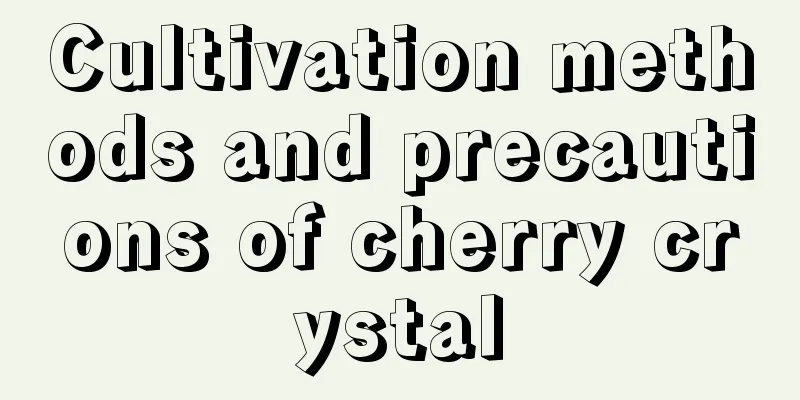How to remedy yellow nasturtium leaves

1. Excessive wateringIf the leaves of nasturtium turn yellow and the soil feels moist, it is probably caused by over-watering. If you discover it in time, you can pad the pot and place it in a well-ventilated place to allow the water to evaporate quickly. If it is discovered too late, the plant's roots have already rotted and need to be pruned and replanted. 2. The soil in the pot is too dryIf the leaves of nasturtium turn yellow, the soil feels dry to the touch, and you weigh the soil in the pot with your hand and it feels particularly light, it is probably caused by the soil being too dry. If you discover it in time, soak the pot for the nasturtium, or slowly water the soil thoroughly, and then pick off the yellow leaves. 3. Temperature is too lowIf the yellow leaves of nasturtium occur in winter and the maintenance temperature is lower than 10℃, it is mostly caused by low temperature. The potted plants should be moved to the indoor heating room in time to overwinter. The indoor temperature is low, so you can cover them with a plastic bag to keep warm and open it for ventilation at noon. 4. Too much lightIf the yellow leaves of nasturtium occur in summer and the potted plants are exposed to the scorching sun, it is mostly caused by too strong light. You should move the potted plants to a cool and ventilated place in time, or put up a shade net and spray water around the plants frequently to increase humidity and reduce temperature. 5. Improper fertilizationIf the yellow leaves of nasturtium occur within 1-3 days after fertilization, it is mostly caused by improper fertilization, which may be due to excessive fertilization or the application of uncomposted fertilizer water. You can flush the potting soil with water to flush out the fertilizer water, dilute it and reduce the degree of fertilizer damage. |
<<: Gardenia leaves turn yellow in winter
>>: What is the reason for the yellowing of camellia leaves?
Recommend
How to water tiger jasmine
1. Watering method 1. Principles of watering: Whe...
Can expired milk be used to water flowers? Uses and methods of expired milk for watering flowers
Can expired milk be used to water flowers? Expire...
How to grow petunias in autumn
1. Is autumn maintenance important? For petunias,...
How long is the growth period of lotus root?
Introduction to Lotus Root Growth Lotus root is n...
Is ginger flower suitable for growing at home?
1. Is it suitable for family raising? Although it...
What are the functions of Chlorophytum
Garden ornamental function Chlorophytum comosum l...
When is the right time to sow cauliflower?
Cauliflower sowing time Cauliflower, also known a...
Cultivation and pruning of desert rose
Desert rose , as an ornamental plant that is easy...
Can lychees be grown in the north?
Can lychees be grown in the north? Lychees can be...
How to grow hairy style to make it bloom
How to cultivate and flower hairy style In order ...
How to preserve gourds without rotting, how to preserve freshly picked gourds
1. How to save it from rotting If you want to pre...
Rapeseed prices
1. Price The price of any item is not fixed; it f...
When is the best time to sow fuchsia?
Fuchsia is a beautiful flower , named because its...
Jasmine repotting and soil changing methods and precautions Jasmine repotting time and soil
Before repotting jasmine, make sure to water it t...
Planting time and method of sweet potato
Planting time of sweet potato The suitable growth...









